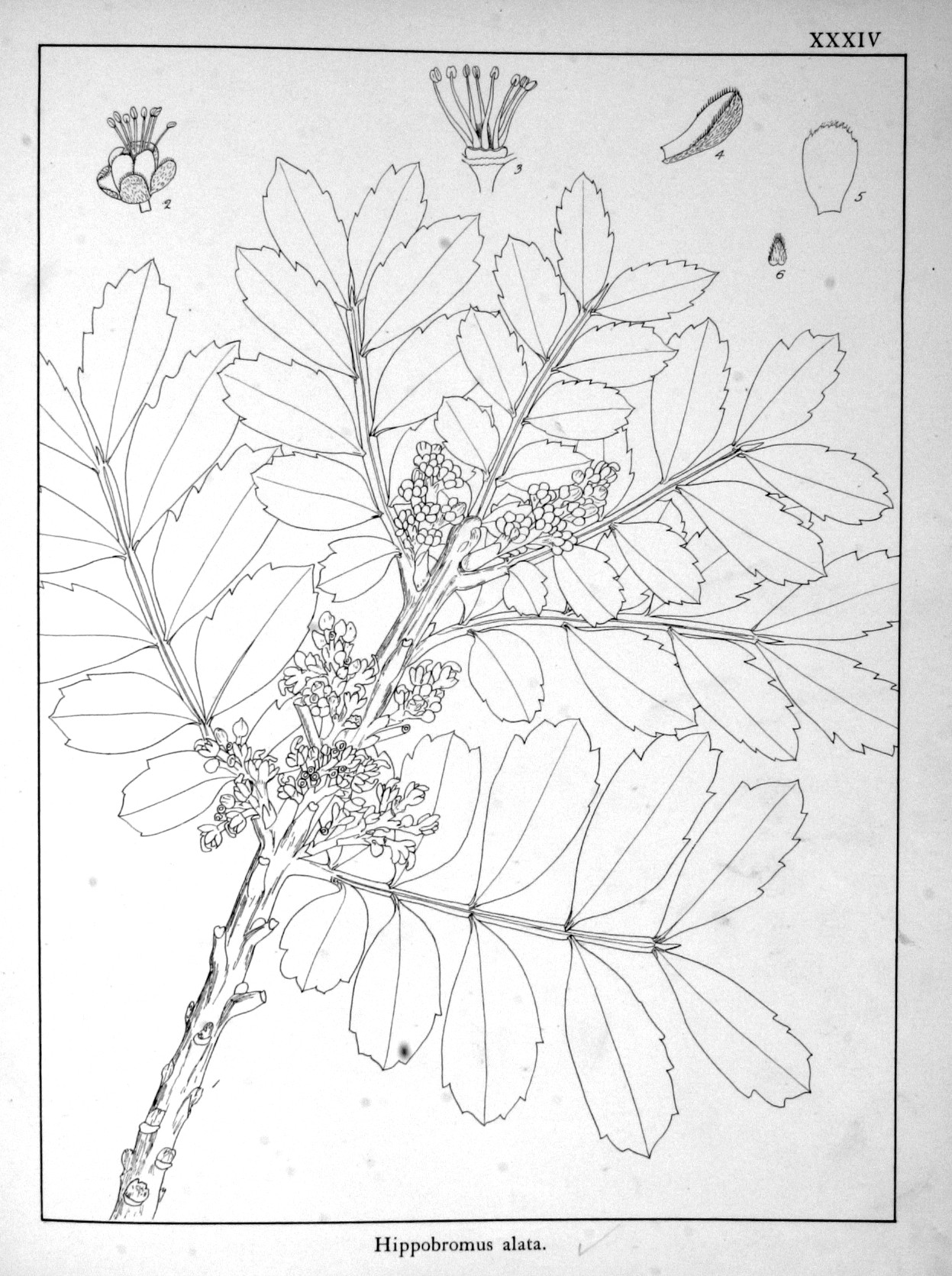- Hippobromus pauciflorus
regnum =Plantae
unranked_divisio =Angiosperms
unranked_classis =Eudicots
unranked_ordo =Rosids
ordo =Sapindales
familia =Sapindaceae
genus = "Hippobromus "
species = "H. pauciflorus"
binomial = "Hippobromus pauciflorus"
binomial_authority = (L.f. )Radlk.
synonyms = "Hippobromus alatus"Eckl. &Zeyh. |"Hippobromus pauciflorus" (Baster-perdepis (Afrikaans) = False horse urine) is a small
South Africa n semi-deciduous tree occurring on the margins of forest, stream banks and in scrub forest. Frequently growing as a tall, slender sapling and accordingly prized as wattle for hut-building. Leaves 75 mm to 150 mm long, paripinnate with some 5 pairs of leaflets which are extremely variable in shape, wedge-shaped at the base, entire, dentate or deeply lobed, sessile and winged on therachis between leaflets.Panicles up to 75 mm long and many-flowered. Fruits are about 8 mm in diameter, black, pulpy and unpalatable. All parts of the tree have an unpleasant odour when bruised. Fourcade describes the wood as "very heavy and hard, very strong, moderately elastic, close-grained ... heartwood brown, sapwood white, tinged with brown, used for wagon-work and other purposes. The wood and leaves contain a strongly-scented resinous and oily substance, which renders them readily inflammable." This tree is found along the east coast from theEastern Cape , throughKwaZulu Natal ,Swaziland and further inland through theTransvaal up to theSoutpansberg .It is one of the few trees on which the larva of the Swallow-tail butterfly ("
Papilio demoleus ") will feed other than species of citrus belonging toRutaceae . The name 'Hippobromus' is Greek for 'smelling of horse urine', which it closely resembles. The specific name is Latin for 'few flowered'. It belongs to the familySapindaceae , closely related toRutaceae , together with over 100 other genera such as "Sapindus ", "Litchi ", "Koelreuteria ", "Dodonaea " and "Blighia ".References
*
The Forests and Forest Flora of The Colony of the Cape of Good Hope byThomas Robertson Sim (1907)
Wikimedia Foundation. 2010.

